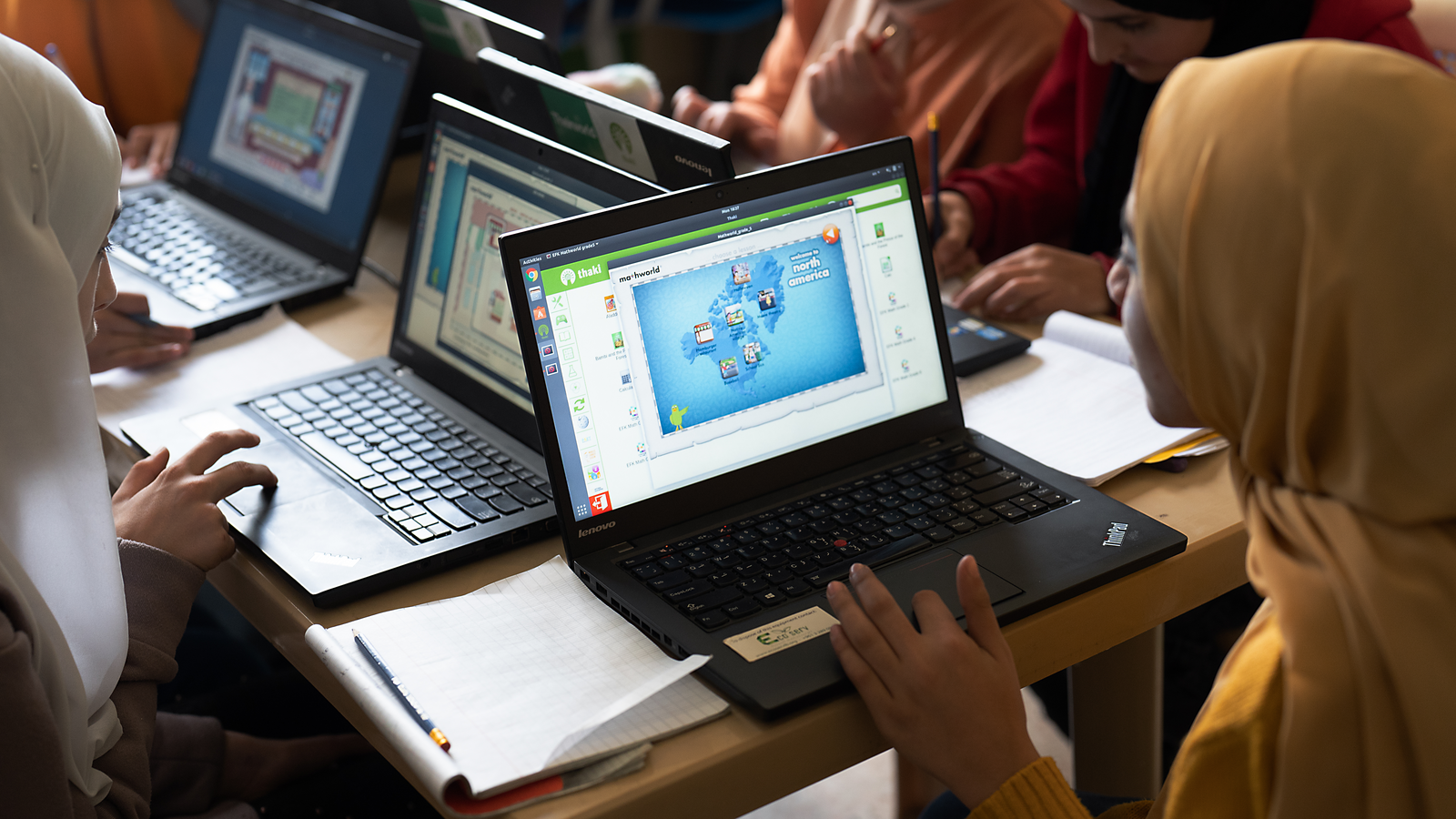
Solving for Our Common Future
Yalda, a 14-year-old student in Afghanistan, wants to be the country’s first woman “Raees-e-Daulat”—Head of the State. While not an easy path for any girl anywhere in the world, for Yalda, living in Kandahar—Southwest Afghanistan, where 85 percent of school-aged girls are out of school, this could remain a distant dream.
In Johannesburg, South Africa, 20-year-old Emmanuel has graduated from a local public university and has been struggling to find work. With a family to support and a degree which he has been told “does not meet the current market needs,” Emmanuel is concerned about joining the 10.3 million young South Africans who remain unemployed or are out of educational and training pathways.
Stateside, Kimberly, a public elementary school science teacher in Wisconsin, struggles to provide supplies for her classroom projects. With a second job as a driver on a ride-share platform, Kimberly, like the other 94 percent of teachers across US classrooms, spends her own money on school supplies to give her students a meaningful learning experience.
While the characters in the above story vignettes are fictional, the array of barriers that individuals, spread over three different continents, are experiencing today are not. Yet, when probed deeper, it becomes apparent how the fundamental realities and their overlapping contours are context agnostic. Socioeconomic disruptions, political conflict, and lack of access to opportunities can combine to create illusions—they can seemingly “normalize” inequality present among regions or people.
Constant technological disruptions and rapidly changing skill-needs have further resulted in a supply and demand disequilibrium in the economy. In many instances, this has led to increased unemployment and growing disenfranchisement among many communities. Years of underestimating the “value-creation” potency of certain segments within society have resulted in poor resource allocation and encouraged systematic marginalization.
How do we realistically solve these global challenges? How do we plan for the long term when the vision for our future is constantly transforming? What should classroom curricula and discourse look like? What technological innovations can help strengthen teachers and their pedagogy? What kind of a future should we be co-creating as a society? And how do we enable our youth to own and spearhead the development of a more equitable and inclusive tomorrow?
Over the last few weeks, as part of MIT Solve’s Teachers & Educators Challenge Leadership Group, and as project lead for General Motors’ partnership with MIT Solve, I along with other GM reviewers have had the opportunity to think about these issues at a global level.
We have been pushed to understand the myriad challenges that communities across the world are facing and draw parallels with our own contexts and realities. It has encouraged us to think in both broad and narrow terms and analyze the exciting, groundbreaking solutions and alternatives available.
I view MIT Solve as a platform that creates an entrepreneurial ecosystem and offers an actionable framework for the most powerful ideas. MIT Solve provides a holistic approach that recognizes that knowledge is at its best when shared and that solutions are not bound to geographic constraints or tied to an institution in today’s connected world.
This approach is not designed to put all its resources into finding that next big singular idea. Instead, it is to find a series of ideas and solutions that complement one another for the greater collective good. This can only be done by identifying and enabling local change agents—by providing them with a global platform to express and solve.
At General Motors, we support STEM education and open technological innovation initiatives like MIT Solve to bring us closer to cutting-edge innovators and innovations of transportation technology now and in the future. The auto industry is experiencing both an unprecedented evolution and revolution, and our success will be entirely dependent on a skilled workforce that can help us develop the mobility solutions of the future. We are committed to preparing today’s students and tomorrow’s workers (and creators) to address the world’s most pressing problems.
We are excited to get the chance to meet these outstanding Solve finalists in New York this month from both the Work of the Future and the Teachers and Educators Challenges. These carefully selected finalists represent not just world-class ideas and solutions but also gender, geographic, racial, and cognitive diversity.
I believe this same diversity in ambition, imagination, and application will ultimately help us get much closer to creating an “opportunity economy” that transcends boundaries and reaches more people. Because, at the end of the day, Yalda, Emmanuel, and Kimberly have a lot more in common than perhaps first meets the eye.
Brain Trust Working Group: Youth, Skills, and the Workforce of the Future during Solve at MIT, May 17, 2018. (Photo: Adam Schultz / MIT Solve)
Tags:
- Learning
- Economic Prosperity
- Sponsorship
Related articles
-
“Education is the one thing you can take with you.” A Q&A with Rudayna Abdo, Founder and CEO, Thaki

-
A LEAP in evidence-based innovation for education
How to address the need for evidence-based innovation in education by empowering researchers, social entrepreneurs and education organizations to work together.
-
Powered by Purpose: E Ink’s ePaper Technology Takes Aim at the World’s Toughest Problems
Because it draws power only when an image changes—and none at all while static—ePaper reduces energy consumption by orders of magnitude. That single breakthrough unlocks net-zero transit signs, off-grid medical notebooks, and other applications that traditional screens simply can’t power sustainably.